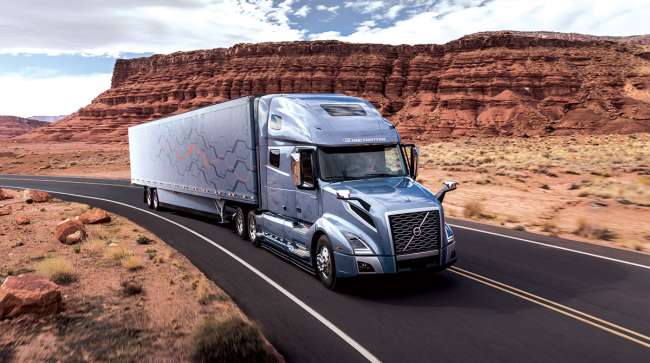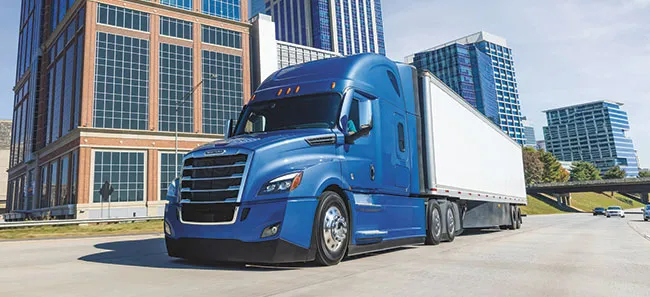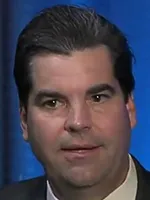Contributing Writer
A New Era for Heavy-Duty Trucks

[Stay on top of transportation news: Get TTNews in your inbox.]
Increasingly stringent emissions regulations over the past few decades have driven a steady cadence of changes to diesel engine architecture and heavy-duty truck design.
Now, a new wave of approved and proposed regulations at the federal and state levels could further accelerate the evolution of commercial vehicles in the coming years.
Truck manufacturers and motor carriers are preparing for a new slate of tougher emissions limits on nitrogen oxide, or NOx, and greenhouse gases, along with sales mandates for zero-emission trucks in California.
The Environmental Protection Agency on Dec. 20 announced a final rule that will tighten limits on smog-forming NOx emissions from heavy-duty diesel trucks for the first time since the current NOx standards were implemented in two phases between 2007 and 2010.
The 1,153-page rule reduces the number of allowed grams of NOx per brake horsepower-hour emitted from the tailpipe from the current .2 gram standard to .035 gram starting in 2027 model year trucks.
The new rule requires emissions reductions in “low load” operating conditions such as idling, moving at low speeds, and operating in stop-and-go conditions. Manufacturers also will have to ensure engines and emission-control systems work as designed in operation — for example, by preventing users from tampering with the controls.
Deep Dive: Class 8 Market
Deep Dive is a quarterly TT feature that examines a pressing industry topic in greater detail. This quarter:
In a statement following EPA’s announcement, American Trucking Associations President Chris Spear said fleets’ purchasing decisions ultimately will determine whether the rule succeeds. He noted that the industry already has reduced NOx emissions by 98% since 1988.
EPA said the NOx rule will reduce heavy-duty emissions by almost 50% from today’s levels by 2045, when the agency projects that most of the regulated fleet will have turned over.
“This is just the first action under EPA’s Clean Trucks Plan to pave the way toward a zero-emission future,” EPA Administrator Michael Regan said in a statement.
Still to come as part of the Clean Trucks Plan are proposed “Phase 3” greenhouse gas standards for heavy-duty vehicles that will also begin with model year 2027 and then significantly increase as soon as model year 2030. EPA intends to release that rule in the coming months. The agency also plans to raise multi-pollutant standards for light- and medium-duty vehicles.
With EPA’s updated NOx standards in place, truck makers now face the task of achieving those targets starting in 2027.
Daimler Truck North America, the manufacturer of Freightliner and Western Star trucks and Detroit engines, expressed its support for the Clean Trucks Plan in a Dec. 20 statement.

Freightliner Cascadia by Freightliner.
“EPA’s Clean Trucks Plan sets challenging targets for our medium- and heavy-duty engines and vehicles,” said Sean Waters, vice president of product compliance and regulatory affairs at DTNA. “We’re ready to rise to meet the technological hurdles of the plan and help reduce emissions from conventionally powered vehicles even further. This is an important and intermediary step on our pathway to the goal of offering exclusively CO2-neutral (in driving operation) medium- and heavy-duty commercial vehicles by 2039.”
The EPA NOx rule is different from the California Air Resources Board’s proposed requirements, which effectively would create two standards. While EPA will set a limit of .035 gram of NOx per brake horsepower-hour by 2027, CARB plans to set a limit of .02 gram that year after first lowering the limit to .05 in 2024.
The CARB rules require a waiver that is still being considered by EPA.

Tunnell
Mike Tunnell, ATA’s senior director of energy and environmental affairs, said EPA generally approves such requests, but he questioned why it would create a national standard and then allow a different one for California and other states that use its standards.
EPA potentially could deny the waiver request, he said, but acknowledged that scenario is a “very rare occurrence.”
ATA’s Spear likewise noted the differences between EPA’s rule and CARB’s proposal.
“ATA remains extremely concerned over the potential growth of state patchworks of NOx emission standards that will create havoc for an industry that operates across local, state and international boundaries,” he said. “We hope EPA and the California Air Resources Board will ultimately agree to a uniform, single standard that best achieves our nation’s environmental goals.”
EPA has received three separate CARB waiver requests, including that state’s NOx rule.
The agency told Transport Topics that it “takes seriously and appreciates California’s long-standing leadership role under the Clean Air Act” and that it will issue decisions on California’s requests in early 2023.
Tunnell expects that EPA’s coming Greenhouse Gas Phase 3 standards will require manufacturers to create a sales mix of traditional diesel and zero-emission trucks.
Regardless, manufacturers will have to enhance their current exhaust emission-control systems while they also focus their efforts on electric and other trucks.
He said the new standards could be the last ones applying to diesel trucks — but they will be in effect for many years because fleets will continue to buy them.

Roeth
Mike Roeth, head of the North American Council for Freight Efficiency, described the coming years as “the messy middle” for the heavy-duty truck market. During this period, manufacturers and fleet customers could utilize a range of technologies such as natural gas, hybrids and biofuels that aren’t zero-emission but do help with sustainability efforts.
Roeth believes the NOx rule may drive more fleets to purchase natural gas-powered trucks, which are already in compliance. He expects battery-electric trucks to be available in line with expectations, but the charging infrastructure will be a problem.
While the time frame is unclear, at some point in the future trucks will be electric and hydrogen-powered, Roeth said.
One measurement for the NOx rule’s success will be the amount of pre-buys associated with it, Roeth said, referring to instances when buyers rush to acquire trucks prior to the new standards, typically leading to a major drop-off in new vehicle sales in subsequent years.
Dawn Fenton, vice president of government relations and public affairs at Volvo Group North America, told EPA last year that pre-buys in 2006 led to a nearly 50% production workforce reduction at the company the next two years.
“If we handle this well, and we have enough time to get it done and do the engineering and all that, we’ll avoid a pre-buy because there’ll be confidence in the next trucks and there won’t be a reason to buy early,” Roeth said.
“Pre-buys are bad,” he said. “Why buy equipment to sit along a fence, and you don’t need it? It ends up putting an artificial high production demand on the industry when truck plants have to go to two shifts or do a whole bunch of scaling up. That’s expensive, and then on the back end, the bottom falls out of the market because people don’t want to buy the new stuff.”
Want more news? Listen to today's daily briefing below or go here for more info:




